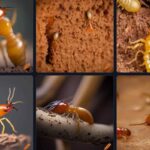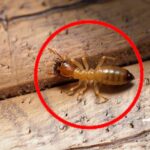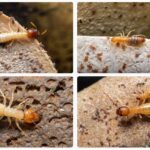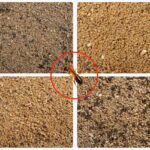Are you looking for a comparison between termites Vs ants, or wondering Do termites look like ants? Finding your way around the world of insects may be difficult, particularly when it comes to telling one organism from another when they seem so similar. Termites and ants often fit into this group, despite having quite different biology and behavior. The topic “Do termites look like ants?” is a frequent one, so in this article, we’ll examine the subtleties of their appearance to clarify the distinctions that make them unique.
Do termites look like ants?
Yes, termites can look like ants, particularly when they are swarming. The two insects do vary in several significant ways, however.
- In comparison to termites, ants have straight antennae.
- Termites lack a constricted waist, while ants do.
- Ant wings vary in length, although termite wings are uniform.
- Ants are often lighter in color than termites.
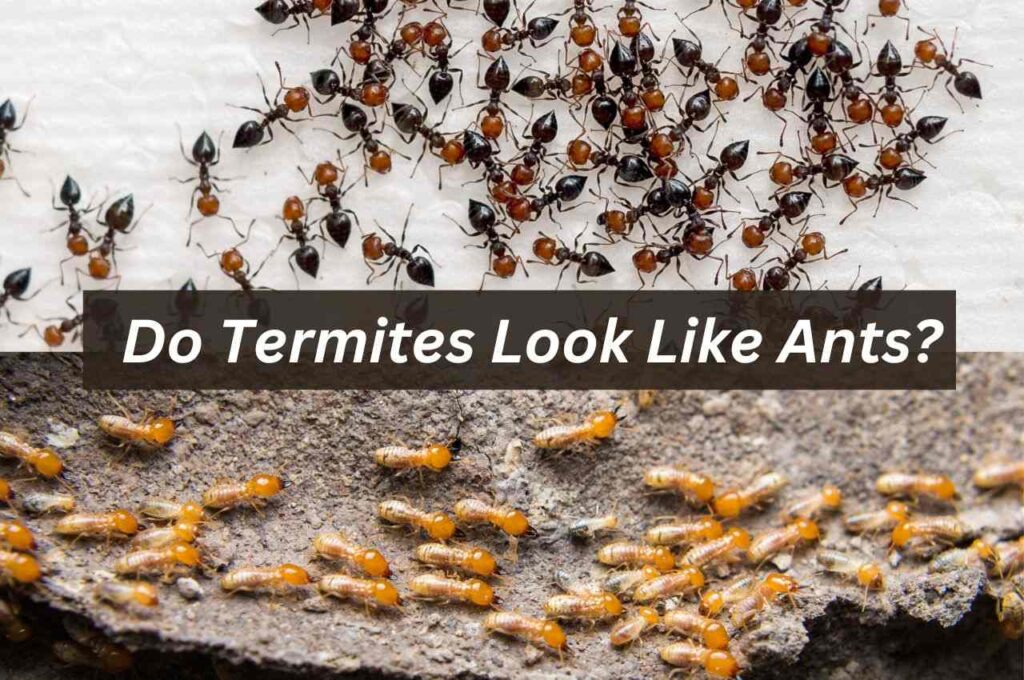
Key differences between termites and ants
| Feature | Termite | Ant |
|---|---|---|
| Antennae | Straight | Elbowed |
| Waist | No visible waist | Pinched waist |
| Wings | Same length | Unequal length |
| Color | Darker | Lighter |
Termites Vs Ants
The two insect pests that are most often seen in homes and businesses are termites and ants. They are both little social insects that live in colonies, which is why people often mistake them. However, there are several significant distinctions that can be found between termites and ants.
- Termites consume wood, but ants do not. While ants eat a range of different nutrients, including nectar, honeydew, and dead insects, termites only consume wood. One of the most crucial ways to identify termites from ants is by their different diets.
- Ants’ antennae are angled, but termites’ are straight. Ants have elbowed antennae whereas termites have straight antennae. Another simple approach to distinguish between these two insects is in this manner.
- In contrast to ants, termites have soft bodies and rigid exoskeletons. The exoskeletons of ants are hard and inflexible, but the bodies of termites are soft and flexible. Termites and ants may be distinguished from one another using this difference in body composition.
| Feature | Termites | Ants |
|---|---|---|
| Body shape | Rectangular | Pinched waist |
| Size | • Termite: ¼ to ½ inch long • Queen Termite: Over 1 inch long | • Ant: ⅛ to 1 inch long • Queen Ant: Up to 1.5 inches long |
| Antennae | Straight, bead-like | Elbowed |
| Wings | Equal in size and shape | Front wings larger than hind wings |
| Color | Pale | Varied |
| Diet | Wood-eating | Omnivore |
| Nesting habits | Underground or in wood | Variety of places |
| Social structure | Have workers, soldiers, and reproductives in the colony | Have workers, soldiers, and reproductive castes in the colony |
| Role in ecosystem | Decomposers that break down cellulose-rich materials | Important predators and scavengers |
| Damage potential | Can cause significant structural damage to wood structures | Generally do not cause extensive structural damage |
| Swarm behavior | Termite swarmers are released during specific times of the year for mating and colony establishment | Ant swarmers may be released throughout the year for mating and colony establishment |
| Colony size | Termite colonies can be larger, often containing thousands to millions of individuals | Ant colonies vary in size, generally smaller than termite colonies |
| Body segmentation | Relatively uniform body segments | Distinct body segments (head, thorax, abdomen) |
| Queen lifespan | Termite queens can live for years to decades | Ant queens generally have shorter lifespans |
| Swarm timing | Termite swarms are typically seasonal, often after rain | Ant swarms can occur throughout the year |
| Flight behavior | Termite swarmers are weak fliers, often fly close to the ground | Ant swarmers are more agile fliers |
| Nuptial flight | Termite swarmers engage in a nuptial flight, during which mating occurs | Ant swarmers also engage in nuptial flight |
| Reproductive caste | In termite colonies, multiple reproductives can be present | Ant colonies usually have one primary queen |
| Soldier characteristics | Termite soldiers have larger heads, strong jaws, and can produce defensive chemicals | Ant soldiers have specialized structures for defense |
| Nesting locations | Termite nests can be hidden deep within wood or underground | Ant nests can be more visible, often built on or above ground |
| Impact on humans | Termites can cause extensive damage to structures and wooden items | Ants are less likely to cause significant structural damage |
| Mutualistic relationships | Termites have mutualistic relationships with certain microbes in their gut for digesting cellulose | Ants have mutualistic relationships with fungi for food sources |
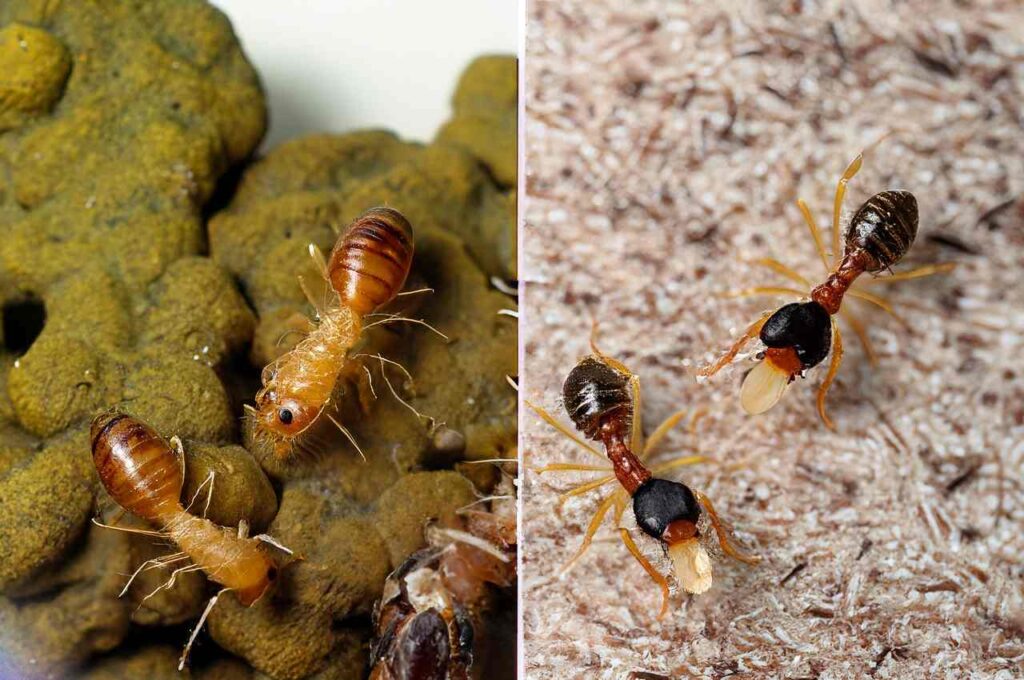
Importance of distinguishing them for proper pest control
Making the distinction between termites and ants is crucial for effective pest management. Ants are often not as destructive as termites, which may do serious damage to houses and businesses. It is crucial to contact a pest control specialist for diagnosis and treatment if you are unclear whether you have termites or ants.
Additional justifications for the significance of recognizing termites from ants include the following:
- Termites and ants both need different treatments. Different methods are used to cure termites and ants. In contrast to ants, which are often treated with baits that both attract and kill insects, termites are normally treated with chemicals that kill the pests.
- Termites are more likely to do harm than ants. In contrast to ants, which normally do not do as much damage, termites may seriously harm houses and businesses. In contrast to ants, who consume a wide range of meals, termites only consume wood.
- Termites may spread rapidly. Ants normally do not spread as swiftly as termites do through a house or company. This is so that termites, who can burrow through wood, can avoid it, but ants normally do not make tunnels.
Termites and ants: Comparative and Distinctive Features
Similarities:
- Both insects are sociable. Both termites and ants live in caste-based colonies, with various members of the colony doing various jobs.
- Each has wings. Ants and termites with wings may utilize them to reproduce.
- Warm climates are home to both. Termites and ants both live in warm temperatures, while certain species may also endure cooler conditions.
- Both are capable of causing property harm. While ants may harm properties by chewing on food and building nests in electrical lines, termites can seriously harm houses and businesses by consuming wood.
Differences:
- Diet. Ants consume a range of nutrients, including nectar, honeydew, and dead insects, while termites consume wood.
- The antennas. Ants have elbowed antennae whereas termites have straight antennae.
- Anatomical makeup. The exoskeletons of ants are hard and inflexible, but the bodies of termites are soft and flexible.
- Conduct. Termites normally construct their nests underground, although ants may do it in a number of locations, including as the ground, trees, and structures.
- Possibility of harm. Ants are less destructive than termites. In contrast to ants, who consume a wide range of meals, termites only consume wood.
Confusion-causing traits that are often present:
- Both insects are tiny. Ants and termites are both tiny insects, making it difficult to differentiate between the two.
- They both live in colonies. Ants and termites both reside in colonies, which may make it difficult to differentiate between the two.
- Each has wings. Confusion might also result from the fact that certain termites and ants have wings.
Subtle differences that set them apart
- The antennae’s configuration. Ants have elbowed antennae whereas termites have straight antennae. This is among the simplest methods for distinguishing termites from ants.
- The body’s surface texture. The exoskeletons of ants are hard and inflexible, but the bodies of termites are soft and flexible. You may detect this distinction by crushing an insect.
- The whereabouts of the nests. Termites normally construct their nests underground, although ants may do it in a number of locations, including as the ground, trees, and structures. When attempting to distinguish between termites and ants, this may be useful.
- The sort of harm they create. While ants eat a number of different meals, termites only consume wood. If you see wood damage in your home or place of business, this difference will be apparent.
It is crucial to contact a pest control specialist for diagnosis and treatment if you are unclear whether you have termites or ants.
Physical Characteristics Comparison
| Physical Characteristics | Termites | Ants | Distinguishing Feature |
|---|---|---|---|
| Antennae | Straight antennae | Elbowed antennae | Antennae shape |
| Body Shape | Straight, wide bodies | Narrow, pinched bodies | Body shape |
| Color | Translucent | Darker colors | Color |
| Wings | Longer wings than ants | Some have wings, but typically shorter | Wing length |
| Size | Smaller than ants | Larger than termites | Size |
| Behavior | More social behavior | Less social behavior | Social behavior |
Behavior and Habitat Differences
| Behavioral and Habitat Differences | Termites | Ants |
|---|---|---|
| Wood Consumption and Damage | Eat cellulose in wood, causing significant damage | Do not typically eat wood; some tunnel through it |
| Food Preferences | Prefer cellulose-rich items like wood, paper, cardboard | Eat diverse foods including nectar, honeydew, insects |
| Habitat Tendencies | Build nests underground, in trees, buildings | Build nests in diverse locations, such as trees, buildings |
| Social Behavior | Highly social, living in large colonies | Social insects, live in smaller colonies |
| Secrecy vs. Visibility | More secretive, often hidden nests | More visible, nests in open areas and buildings |
Life Cycle and Lifespan
| Life Cycle Stages | Ants | Termites | Extended Life Cycle |
|---|---|---|---|
| Egg | Laid by the queen, fertilized by the king | Laid by the queen, fertilized by the king | Queen can live for decades |
| Larva | Eggs hatch into wingless, grub-like larvae | Eggs hatch into wingless nymphs | Worker termites live a few years |
| Pupa | Larvae pupate and metamorphose into adults | Nymphs molt into workers, soldiers, reproductives | Soldiers have shorter life spans |
| Adult | Adults emerge with distinct roles in the colony (e.g., worker, soldier, queen) | Division of labor: workers, soldiers, reproductives | Termite queen can live many years |
Winged Insects Comparison
| Characteristic | Winged Termites | Flying Ants |
|---|---|---|
| Wings | Equal in length | Unequal in length (front longer than hind) |
| Antennae | Straight and thread-like | Elbowed and club-shaped |
| Body | Soft and cylindrical | Hard and oval-shaped |
| Fragility | Fragile, easily torn | Less fragile than termite wings |
| Adaptation | Wings adapted for short-distance flight | Unequal wing lengths aid efficient flying |
| Flight Purpose | Short distance for mating and colony establishment | More efficient flying |
Coloration and Visibility
| Characteristic | Ants | Termites |
|---|---|---|
| Coloration | Dark-colored | Translucent, light-colored |
| Blending In | Dark color helps blend with surroundings | Translucent bodies aid in camouflage |
| Light Sensitivity | Not as sensitive to light and heat | Sensitive to light, prefer darkness |
| Habitat | Various habitats (outdoors and indoors) | Dark, moist places |
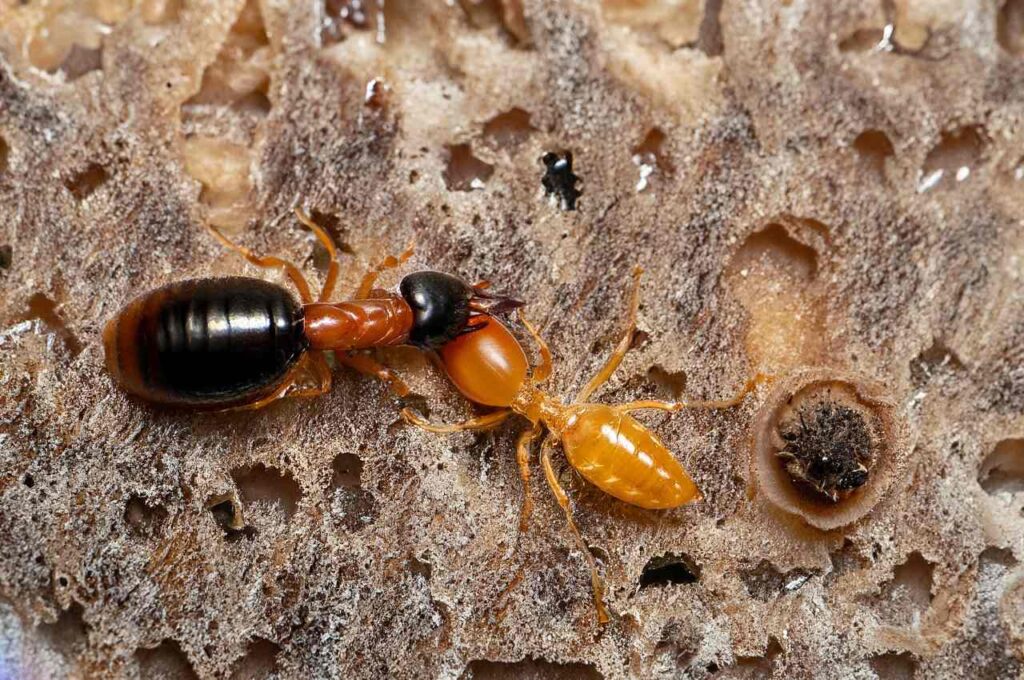
Coexistence of ants and termites
Although they often live near to one another, termites and ants seldom cohabit amicably. Termites have chemical defenses against ant assaults, but ants operate as termite predators, hunting and destroying them. With limited examples of possible reciprocal benefit, some situations entail shared nests, such as ants nesting in termite mounds.
| Aspect | Ants | Termites |
|---|---|---|
| Relationship | Predators of termites, attack and kill | Produce a chemical repellent against ants |
| Coexistence | Rare cases of shared nests | Some ants build nests in termite mounds, limited instances |
| Interaction | Ants target termites for predation | Ants in nests may not harm termites, potential benefits |
| Typical Behavior | Predatory, hostile towards termites | Chemical defense against ant attacks |
| Importance of Control | Nuisance factor | Significant property damage potential |
| Professional Help | Pest control professionals advised | Consultation for accurate identification and treatment |
Termites Vs Ants pictures


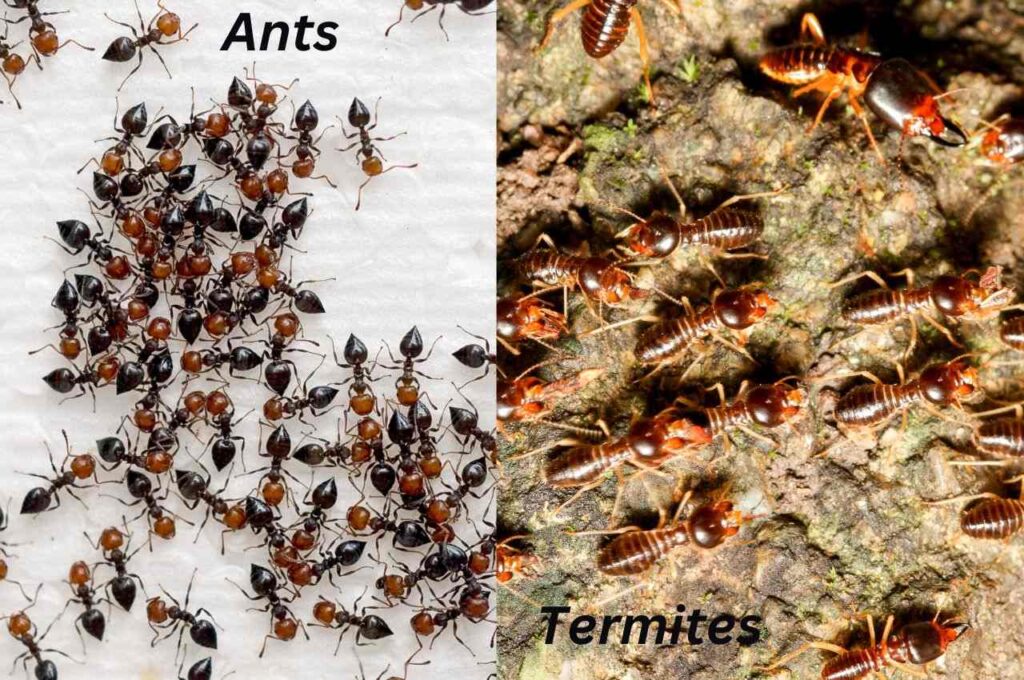
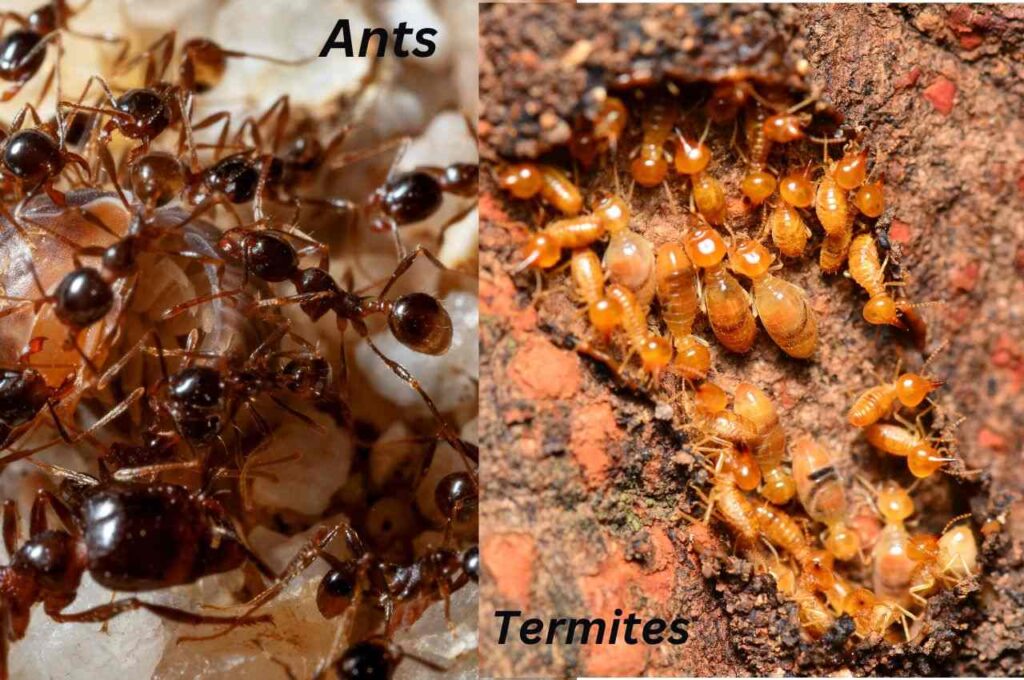
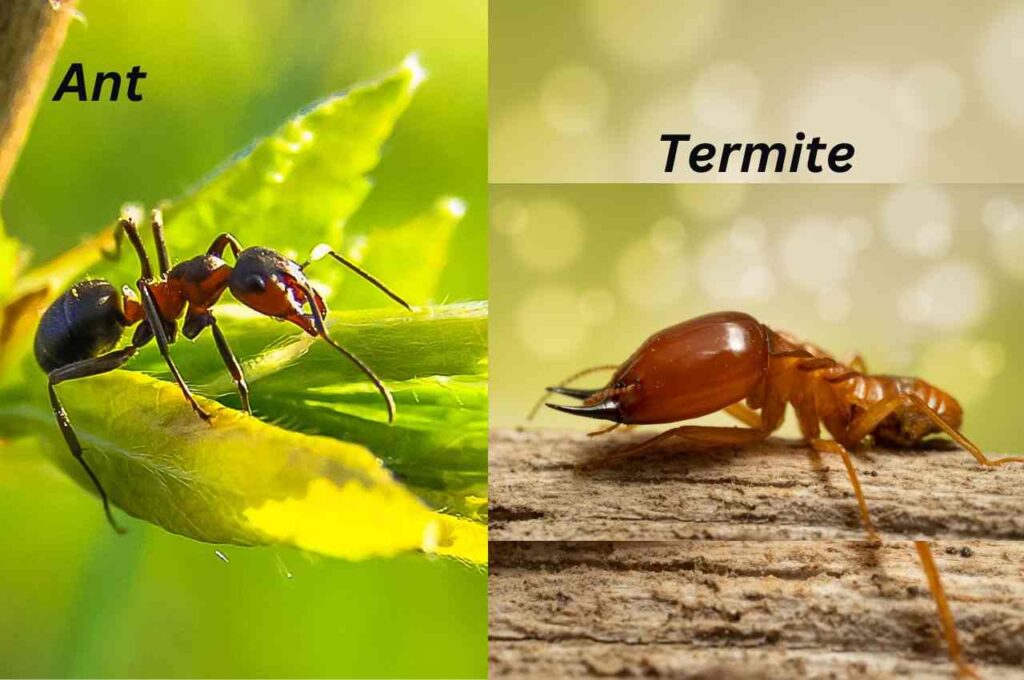
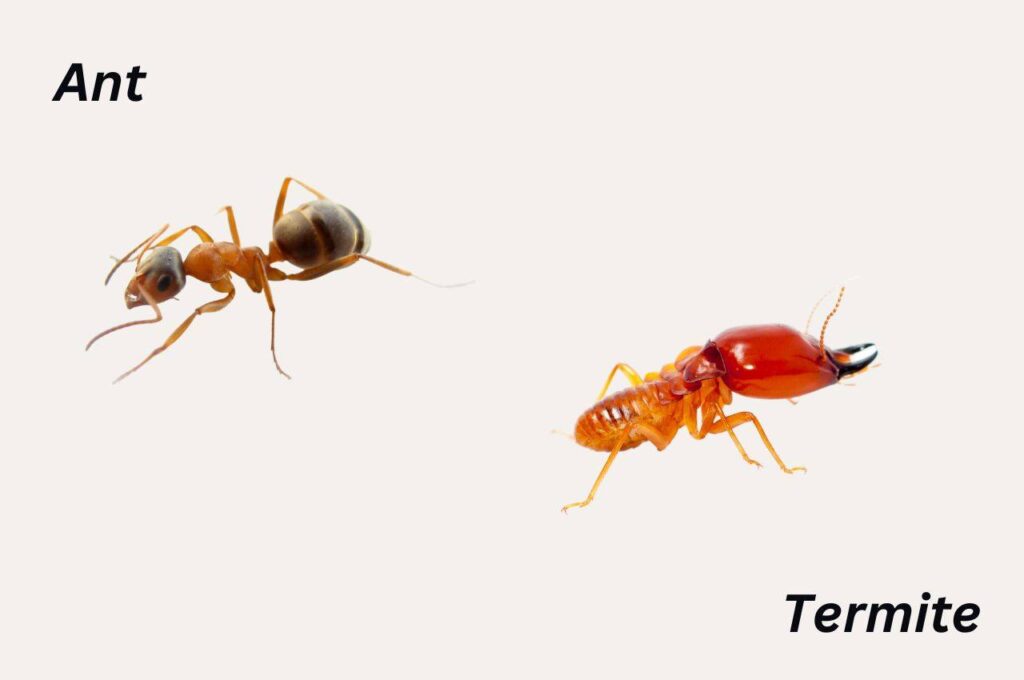
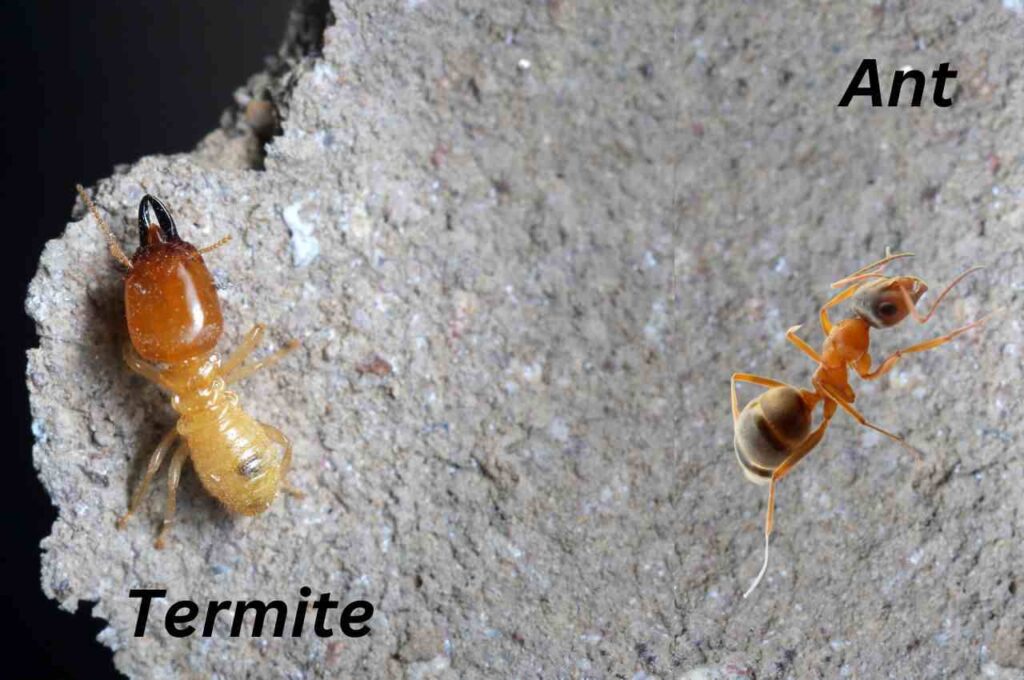
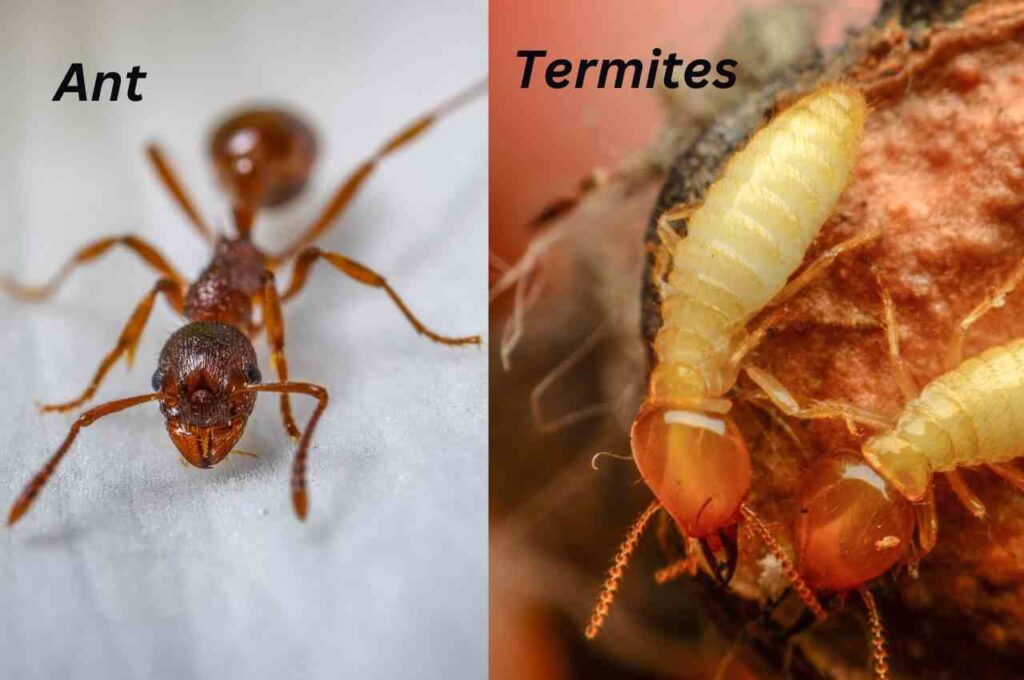
Conclusion
Ants and termites vary significantly from one another in terms of their traits, actions, and possible effects. In contrast to ants, who have elbowed antennae, strong exoskeletons, and a wide diversity of habitats, termites devour wood and have straight antennae and soft bodies. Notably, termites have the potential to cause significant structural damage, highlighting the need of precise identification. When there is doubt regarding termite or ant existence, consulting a pest control specialist is essential since their knowledge enables suitable action for efficient management and avoidance.
Frequently Asked Questions
Are small black ants a sign of termites?
Not necessarily. Small black ants may suggest termites, carpenter ants, or pavement ants. Ants have elbowed antennae, squeezed waist, and winged queen and male ants, whereas termites have straight antennae, no pinched waist, and swarm in spring and summer. Termites attack damp wood, ants dry wood. For proper tiny black ant identification, call a pest control specialist.
How long do termites look like ants?
Termites only resemble ants briefly during swarming, when they have wings and seek mates to form new colonies. After mating, termites lose their ant-like appearance and become workers, soldiers, or queens. This swarming phase lasts a few weeks, when termites are attracted to light and may be seen around windows or doors. These flying insects must be identified accurately; if they are termites, call a pest control specialist to avoid infestations.
How to differentiate tiny termites from ants?
Identifying microscopic termites from ants is difficult, but some crucial features may assist. Termites have straight antennae, no waist, and equal-length wings, whereas ants have elbowed antennae, a pinched waist, and asymmetrical wings. Additionally, termites are darker than ants. Other signs include termite mud tubes, spring and summer swarming, wood damage, and lost wings. If unsure, consult a pest control specialist.
Are termites and ants easily confused due to their similar sizes?
Yes, termites and ants are similar in size and might be mistaken. Both insects are black or brown and 0.25–0.5 inches long. There are certain major characteristics between the two insects that might help you distinguish them. Ant antennae are elbowed and segmented, whereas termite antennae are straight and smooth. Termites have no waist, unlike ants’ squeezed waist. Additionally, termite wings are identical in length, but ant wings are not. Termites prefer damp wood homes and are darker than ants. Ants are more adaptable.
What are the primary physical differences between termites and ants?
The antennae of termites are straight and smooth, whereas those of ants are elbowed and segmented. Ants have a tight waist, whereas termites have no waist. Ant wings have longer front wings than rear wings, unlike termite wings. Termites are darker than ants. Ants enjoy a broader range of environments than termites, which need damp wood.
How can I differentiate termites from ants based on their antennae?
The antennae of termites and ants vary as follows: Moniliform termite antennae are straight and smooth, with numerous little bead-like segments. Ant antennae are elbowed, with a club-like end and segmented scape. This antennae form, segmentation, and appearance difference distinguishes termites from ants.
Do termites and ants have different body structures?
Termites and ants have distinct bodies. Termites have no waist, but ants have a tight waist. The termites’ wings are same length, but the ants’ front wings are longer than the rear wings. Another distinction is their antennae: termites are straight and smooth, whereas ants are elbowed and segmented. These waist, wing, and antennae differences distinguish termites from ants.
Do termites and ants have different colors?
There are color differences between termites and ants. Some termites are transparent and range from pale brown to dark brown. However, ants usually seem light brown to black, with certain species showing red and yellow. These colour changes may help differentiate termites from ants.
Can termites be translucent in appearance?
Yes, some termites are translucent in appearance. Thin exoskeletons and air in their bodies cause this. This translucence is most visible in winged termite swarmers from subterranean, drywood, and dampwood species. However, certain termite species have thicker exoskeletons and are more opaque.
What kind of habitats do termites and ants prefer?
Termites and ants have species-specific habitat preferences. Termites like soil, decomposing wood, and leaf litter because they need humidity to consume wood. Ants, however, may adapt to many settings. Some ant species flourish in wet environments like woods or water sources, while others thrive in deserts or grasslands. Subterranean termites live in soil, drywood termites in arid wood, dampwood termites in wet wood, carpenter ants in moist timber, pavement ants in pavement cracks, and fire ants in fields or gardens. Individual species may diverge from these tendencies.
How do winged termites and flying ants differ in appearance?
Flying ants and winged termites look same, causing misunderstanding. Key characteristics may help differentiate. Winged termites have straight, smooth antennae, no waist, uniform-length wings, and darker color. Flying ants have elbowed antennae, a pinched waist, varying-length wings with larger front wings, and a lighter color. These differences help distinguish these insects.
Are there specific features that make termite wings easily distinguishable?
Termite wings have specific traits that help distinguish them. Termites have two sets of transparent, vein-patterned wings that are equal in length and longer than their body. These wings are leathery and transparent or milky white. These traits usually apply to termite wings, with occasional exceptions. Winged insects with these features may be termites.
Do termites and ants prefer different light and darkness?
Termites and ants favor light and darkness in their environments. Termites are nocturnal and prefer dark, wet settings since light is deadly. Due to their requirement for hydration, sensitivity to predators in well-lit environments, and desire to hide, they prefer gloom. Ants, however, adapt better to light. Some ant species are diurnal, while others are nocturnal. Diet, predator defense, and habitat adaptability affect these choices. Recognizing that termite and ant preferences vary by species is crucial.
- How do termite mounds help regulate temperature? - 7 January 2024
- 10 Effective Termite Control Methods That Actually Work - 4 January 2024
- How Long Does It Take for a Termite Mound to Form? - 21 December 2023

